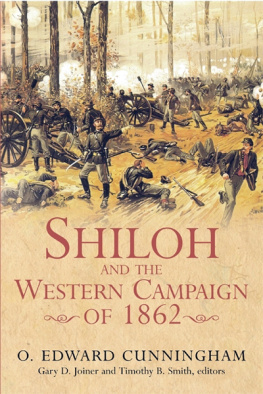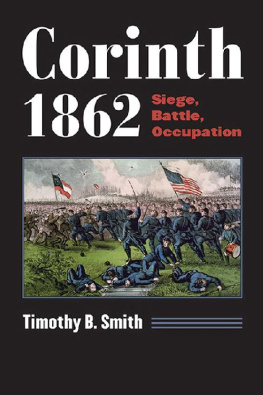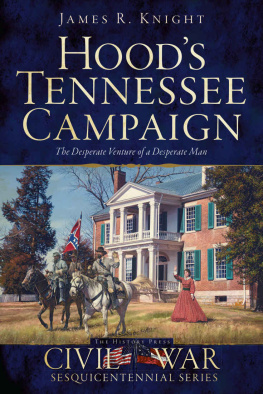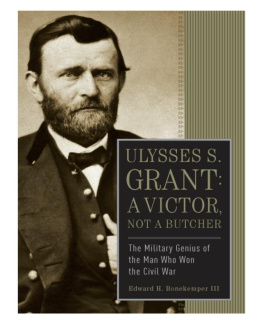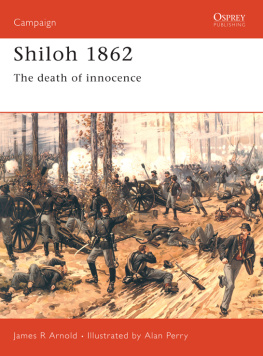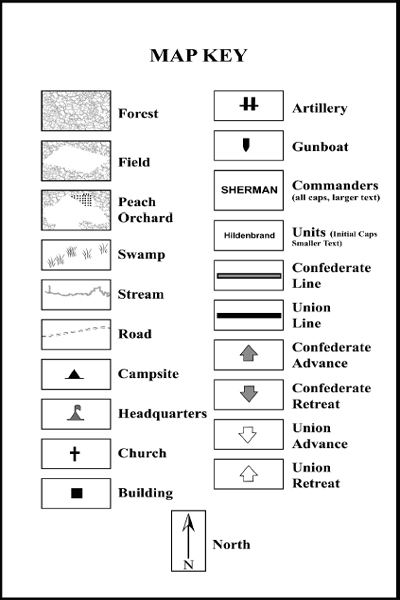O. Edward Cunningham - Shiloh and the Western Campaign of 1862
Here you can read online O. Edward Cunningham - Shiloh and the Western Campaign of 1862 full text of the book (entire story) in english for free. Download pdf and epub, get meaning, cover and reviews about this ebook. City: El Dorado Hills, year: 2009, publisher: Savas Beatie, genre: History. Description of the work, (preface) as well as reviews are available. Best literature library LitArk.com created for fans of good reading and offers a wide selection of genres:
Romance novel
Science fiction
Adventure
Detective
Science
History
Home and family
Prose
Art
Politics
Computer
Non-fiction
Religion
Business
Children
Humor
Choose a favorite category and find really read worthwhile books. Enjoy immersion in the world of imagination, feel the emotions of the characters or learn something new for yourself, make an fascinating discovery.
- Book:Shiloh and the Western Campaign of 1862
- Author:
- Publisher:Savas Beatie
- Genre:
- Year:2009
- City:El Dorado Hills
- Rating:5 / 5
- Favourites:Add to favourites
- Your mark:
Shiloh and the Western Campaign of 1862: summary, description and annotation
We offer to read an annotation, description, summary or preface (depends on what the author of the book "Shiloh and the Western Campaign of 1862" wrote himself). If you haven't found the necessary information about the book — write in the comments, we will try to find it.
The conflagration at Shiloh had its roots in the strong Union advance during the winter of 1861-1862 that resulted in the capture of Forts Henry and Donelson in Tennessee. The offensive collapsed General Albert S. Johnston s advanced line in Kentucky and forced him to withdraw all the way to northern Mississippi. Anxious to attack the enemy, Johnston began concentrating Southern forces at Corinth, a major railroad center just below the Tennessee border. His bold plan called for his Army of the Mississippi to march north and destroy General Grant s Army of the Tennessee before it could link up with another Union army on the way to join him.
On the morning of April 6, Johnston boasted to his subordinates, Tonight we will water our horses in the Tennessee! They nearly did so. Johnston s sweeping attack hit the unsuspecting Federal camps at Pittsburg Landing and routed the enemy from position after position as they fell back toward the Tennessee River. Johnstons sudden death in the Peach Orchard, however, coupled with stubborn Federal resistance, widespread confusion, and Grant s dogged determination to hold the field, saved the Union army from destruction. The arrival of General Don C. Buells reinforcements that night turned the tide of battle. The next day, Grant seized the initiative and attacked the Confederates, driving them from the field. Shiloh was one of the bloodiest battles of the entire war, with nearly 24,000 men killed, wounded, and missing.
Edward Cunningham, a young Ph.D. candidate studying under the legendary T. Harry Williams at Louisiana State University, researched and wrote Shiloh and the Western Campaign of 1862 in 1966. Although it remained unpublished, many Shiloh experts and park rangers consider it to be the best overall examination of the battle ever written. Indeed, Shiloh historiography is just now catching up with Cunningham, who was decades ahead of modern scholarship.
Western Civil War historians Gary D. Joiner and Timothy B. Smith have resurrected Cunningham s beautifully written and deeply researched manuscript from its undeserved obscurity. Fully edited and richly annotated with updated citations and observations, original maps, and a complete order of battle and table of losses, Shiloh and the Western Campaign of 1862 will be welcomed by everyone who enjoys battle history at its finest.
About the Authors:
Edward Cunningham, Ph.D., studied under T. Harry Williams at Louisiana State University. He was the author of The Port Hudson Campaign: 1862-1863 (LSU, 1963). Dr. Cunningham died in 1997.
Gary D. Joiner, Ph.D., is the author of One Damn Blunder from Beginning to End: The Red River Campaign of 1864, winner of the 2004 Albert Castel Award and the 2005 A. M. Pate, Jr., Award, and Through the Howling Wilderness: The 1864 Red River Campaign and Union Failure in the West. He lives in Shreveport, Louisiana.
Timothy B. Smith, Ph.D., is author of Champion Hill: Decisive Battle for Vicksburg (winner of the 2004 Mississippi Institute of Arts and Letters Non-fiction Award), The Untold Story of Shiloh: The Battle and the Battlefield, and This Great Battlefield of Shiloh: History, Memory, and the Establishment of a Civil War National Military Park. A former ranger at Shiloh, Tim teaches history at the University of Tennessee.
O. Edward Cunningham: author's other books
Who wrote Shiloh and the Western Campaign of 1862? Find out the surname, the name of the author of the book and a list of all author's works by series.

